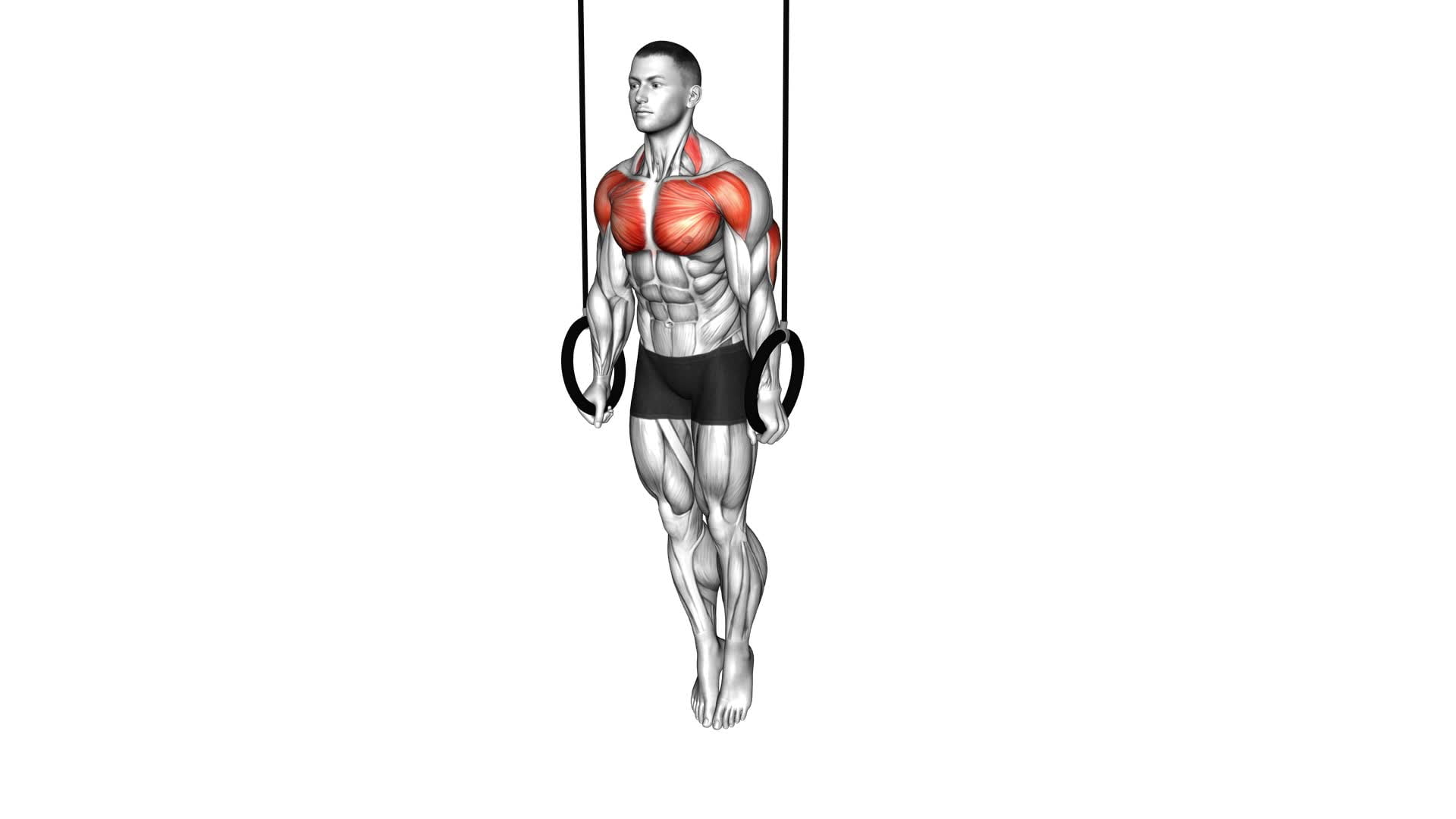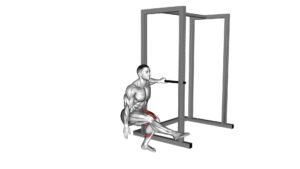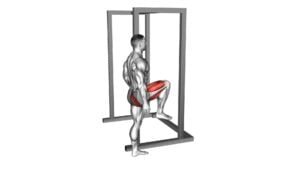Ring Support Hold – Video Exercise Guide & Tips

Looking to strengthen your upper body and core?
Watch This Exercise Video
The Ring Support Hold is the perfect exercise for you. In this video exercise guide, we'll show you the proper technique, variations, and progressions for maximum results.
Avoid common mistakes and get the most out of your workout with our expert tips.
Get ready to challenge yourself and take your fitness to the next level with the Ring Support Hold.
Let's get started!
Key Takeaways
- The Ring Support Hold improves stability, upper body strength, and engages multiple muscle groups.
- It strengthens the muscles that support joints, enhances balance and coordination, and builds core strength.
- The proper technique includes gripping the rings firmly, extending arms fully, engaging shoulders and core, and maintaining a straight body position.
- Variations and progressions for the exercise include L-Sit Hold, Ring Turnout Hold, timed holds, and using weighted vests or ankle weights.
Benefits of the Ring Support Hold
To maximize the effectiveness of your workout routine, incorporating the Ring Support Hold provides numerous benefits. This exercise is highly effective in improving stability and increasing upper body strength.
The Ring Support Hold requires you to hold on to gymnastics rings while maintaining a stable position with your arms fully extended. This exercise engages multiple muscle groups, including your shoulders, chest, and core. By challenging your stability, it helps to strengthen the muscles that support your joints, improving your overall balance and coordination.
In addition to stability, the Ring Support Hold is excellent for developing upper body strength. It targets your triceps, pectoral muscles, and deltoids, helping you build strong and defined arms, chest, and shoulders. It also engages your core muscles, contributing to a stronger and more stable torso.
Incorporating the Ring Support Hold into your workout routine can lead to significant improvements in both stability and upper body strength. Start by holding the position for short durations and gradually increase the time as you progress. Remember to maintain proper form and engage your muscles throughout the exercise. Combine it with other exercises to create a well-rounded workout that targets your entire body.
Proper Technique for the Ring Support Hold
To perform the Ring Support Hold exercise correctly and effectively, it's important to maintain proper technique and form. The Ring Support Hold is a challenging exercise that targets the muscles in your upper body, including your shoulders, chest, and triceps. It also engages your core muscles for stability and balance. By practicing this exercise regularly, you can improve your upper body strength, stability, and overall body control.
To begin the Ring Support Hold, start by gripping the rings firmly with your palms facing down. Extend your arms fully and keep your body straight and aligned. Your shoulders should be engaged and pulled down away from your ears. Brace your core and squeeze your glutes to maintain a stable position.
To progress in the Ring Support Hold, you can gradually increase the duration of the hold, aiming for 30 seconds or longer. Additionally, you can work on lowering yourself down into a Ring Support Hold from an elevated position, such as a dip or push-up position. This will increase the challenge and further enhance your strength and control.
Remember to always listen to your body and progress at a pace that's comfortable for you. With consistent practice and proper technique, the Ring Support Hold can help you build a strong and resilient upper body.
Variations and Progressions for the Ring Support Hold
To progress in the Ring Support Hold, you can challenge yourself with variations and progressions that will further develop your upper body strength and control. Incorporating advanced variations and following specific training protocols can help you continue to improve and push your limits.
One advanced variation of the Ring Support Hold is the L-Sit Hold. Instead of keeping your legs straight and extended, you bring your knees up towards your chest, forming an L-shape with your body. This variation increases the demand on your core muscles and requires additional strength and stability.
Another variation to try is the Ring Turnout Hold. During this exercise, you rotate your hands outward, so your palms are facing away from your body. This position places more stress on your shoulders and chest, challenging your stability and strength in a different way.
In terms of training protocols, you can incorporate timed holds to progressively increase the difficulty. Start with shorter holds, such as 10 seconds, and gradually work your way up to longer holds, aiming for 30 seconds or more. Additionally, you can experiment with adding weighted vests or ankle weights to further intensify the exercise.
Common Mistakes to Avoid During the Ring Support Hold
As you progress in the Ring Support Hold, it's important to be aware of common mistakes to avoid, which can hinder your progress and increase the risk of injury. Maintaining proper form is crucial for maximizing the benefits of this exercise and preventing strain on your muscles and joints.
One common mistake to avoid is arching your back excessively. This can lead to unnecessary pressure on your lower back and can compromise the stability of your hold. Instead, focus on keeping your core engaged and your spine neutral throughout the exercise.
Another mistake to watch out for is letting your shoulders shrug up towards your ears. This not only puts additional strain on your neck and shoulder muscles, but it also takes away from the proper alignment of the exercise. Remember to actively depress your shoulders and keep them down and away from your ears.
Lastly, avoid letting your elbows flare out to the sides. This can cause unnecessary stress on your shoulder joints and limit your stability. Keep your elbows tucked in close to your body, pointing slightly behind you.
Tips for Getting the Most Out of the Ring Support Hold
To maximize the benefits of the Ring Support Hold and enhance your progress, incorporate these effective tips into your routine:
- Ring Support Hold Progression: Start with shorter holds and gradually increase the duration as you build strength and stability. Begin with 10-15 second holds and aim to work your way up to 30-45 seconds. Once you can comfortably hold the position for this duration, you can progress to more advanced variations of the exercise, such as the Ring Support Hold with L-sit or Ring Support Hold with tuck planche.
- Ring Support Hold Modifications: If you find the Ring Support Hold too challenging, you can modify the exercise to suit your current fitness level. One modification is to perform the hold with your knees bent and feet on the ground, which reduces the level of difficulty. Another option is to use a resistance band or assistance from a partner to help support your body weight and gradually decrease the assistance over time.
- Engage Your Core: During the Ring Support Hold, it's important to engage your core muscles to maintain proper form and stability. Focus on drawing your belly button towards your spine and maintaining a strong, stable torso throughout the exercise.
- Proper Ring Placement: Ensure that the rings are properly positioned and stable before starting the exercise. The rings should be set at shoulder-width apart and at a height that allows your feet to hover just above the ground when in the support position. This will ensure optimal engagement of your upper body muscles and prevent any unnecessary strain on your joints.
Incorporating these tips into your Ring Support Hold routine will help you progress effectively and get the most out of this challenging exercise. Remember to listen to your body and adjust the difficulty level as needed to continue challenging yourself while maintaining proper form.
Frequently Asked Questions
How Long Should I Hold the Ring Support Position?
When it comes to the ring support hold, the duration you should aim for depends on your shoulder strength and progressions. It's important to start with shorter holds and gradually increase the time as you build strength and stability.
This exercise is great for developing upper body and core strength. Remember to engage your shoulders and keep your body in a straight line.
With consistent practice, you'll be able to hold the ring support position for longer periods of time.
Can the Ring Support Hold Help With Shoulder Stability?
The ring support hold is an excellent exercise for improving shoulder stability. By engaging your core and maintaining a strong position, you'll develop the necessary shoulder strength to support your body weight.
This exercise is particularly beneficial for athletes involved in activities that require upper body strength, such as gymnastics or rock climbing. Incorporating the ring support hold into your training routine will help you build stability and prevent injuries in your shoulder joints.
Can Beginners Perform the Ring Support Hold?
Yes, beginners can perform the ring support hold. It's a great exercise to build upper body strength and stability. To make it more manageable, you can modify it by using a lower height or placing your feet on the ground for support.
As you progress, you can gradually increase the difficulty by raising the rings or straightening your legs. This exercise is a fantastic way to develop your core and improve overall body control.
Is the Ring Support Hold Primarily an Upper Body Exercise?
The ring support hold isn't solely an upper body exercise. While it does work your upper body muscles, such as your shoulders, chest, and arms, it also engages your core, back, and legs for stability.
This exercise offers a range of benefits, including improving upper body strength, stability, and overall body control.
To perform it properly, focus on maintaining a straight body position, engaging your muscles, and keeping your rings stable.
Are There Any Pre-Requisites or Mobility Requirements for the Ring Support Hold?
Before attempting the ring support hold, it's important to know if there are any pre-requisites or mobility requirements.
Understanding the necessary preparation exercises and common mistakes can help you perform the hold correctly and avoid injury.
Conclusion
The ring support hold is a highly beneficial exercise that targets multiple muscle groups and improves overall upper body strength. By using proper technique and progressing through variations, you can challenge your muscles and continue to see progress.
Avoid common mistakes such as sagging or hunching your shoulders to maximize the effectiveness of this exercise. Remember to listen to your body and adjust the difficulty level accordingly.
Incorporate the ring support hold into your workout routine for impressive results.

Author
Years ago, the spark of my life’s passion ignited in my mind the moment I stepped into the local gym for the first time. The inaugural bead of perspiration, the initial endeavor, the very first surge of endorphins, and a sense of pride that washed over me post-workout marked the beginning of my deep-seated interest in strength sports, fitness, and sports nutrition. This very curiosity blossomed rapidly into a profound fascination, propelling me to earn a Master’s degree in Physical Education from the Academy of Physical Education in Krakow, followed by a Sports Manager diploma from the Jagiellonian University. My journey of growth led me to gain more specialized qualifications, such as being a certified personal trainer with a focus on sports dietetics, a lifeguard, and an instructor for wellness and corrective gymnastics. Theoretical knowledge paired seamlessly with practical experience, reinforcing my belief that the transformation of individuals under my guidance was also a reflection of my personal growth. This belief holds true even today. Each day, I strive to push the boundaries and explore new realms. These realms gently elevate me to greater heights. The unique combination of passion for my field and the continuous quest for growth fuels my drive to break new ground.



